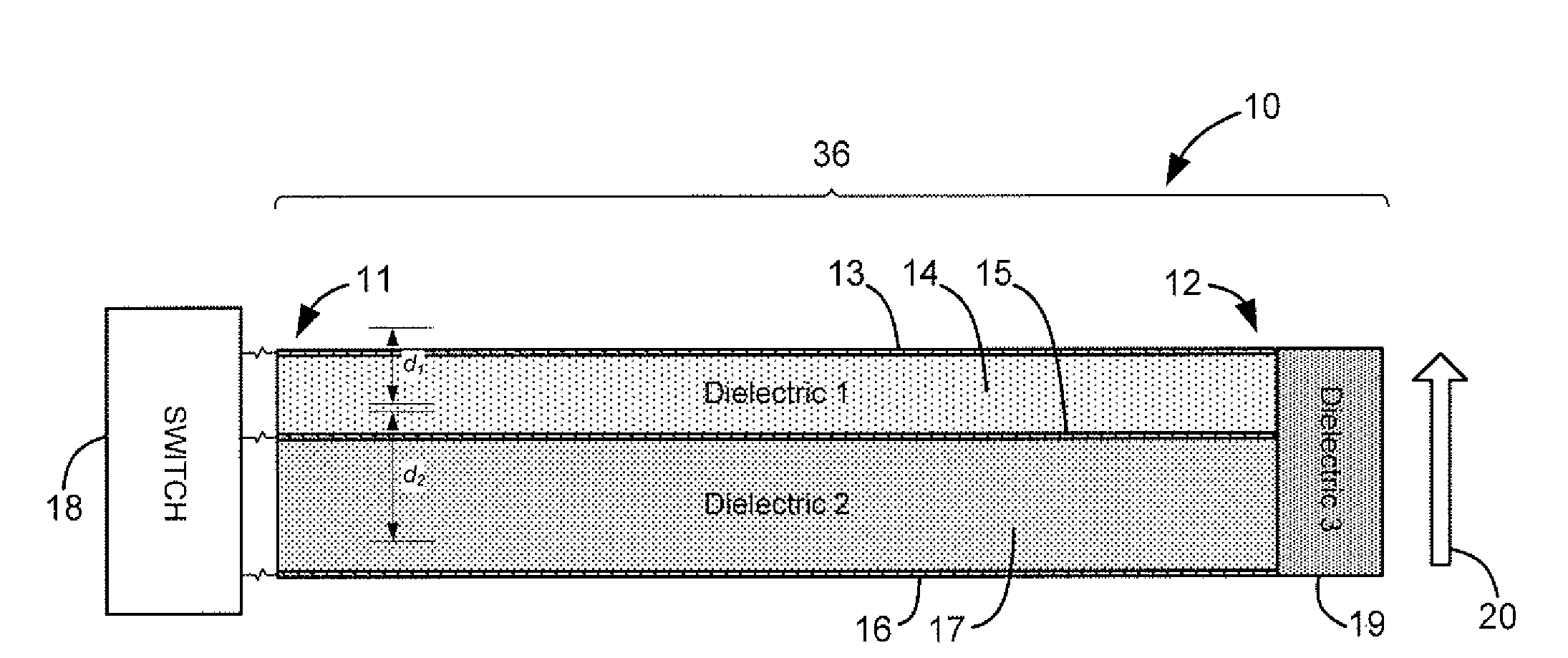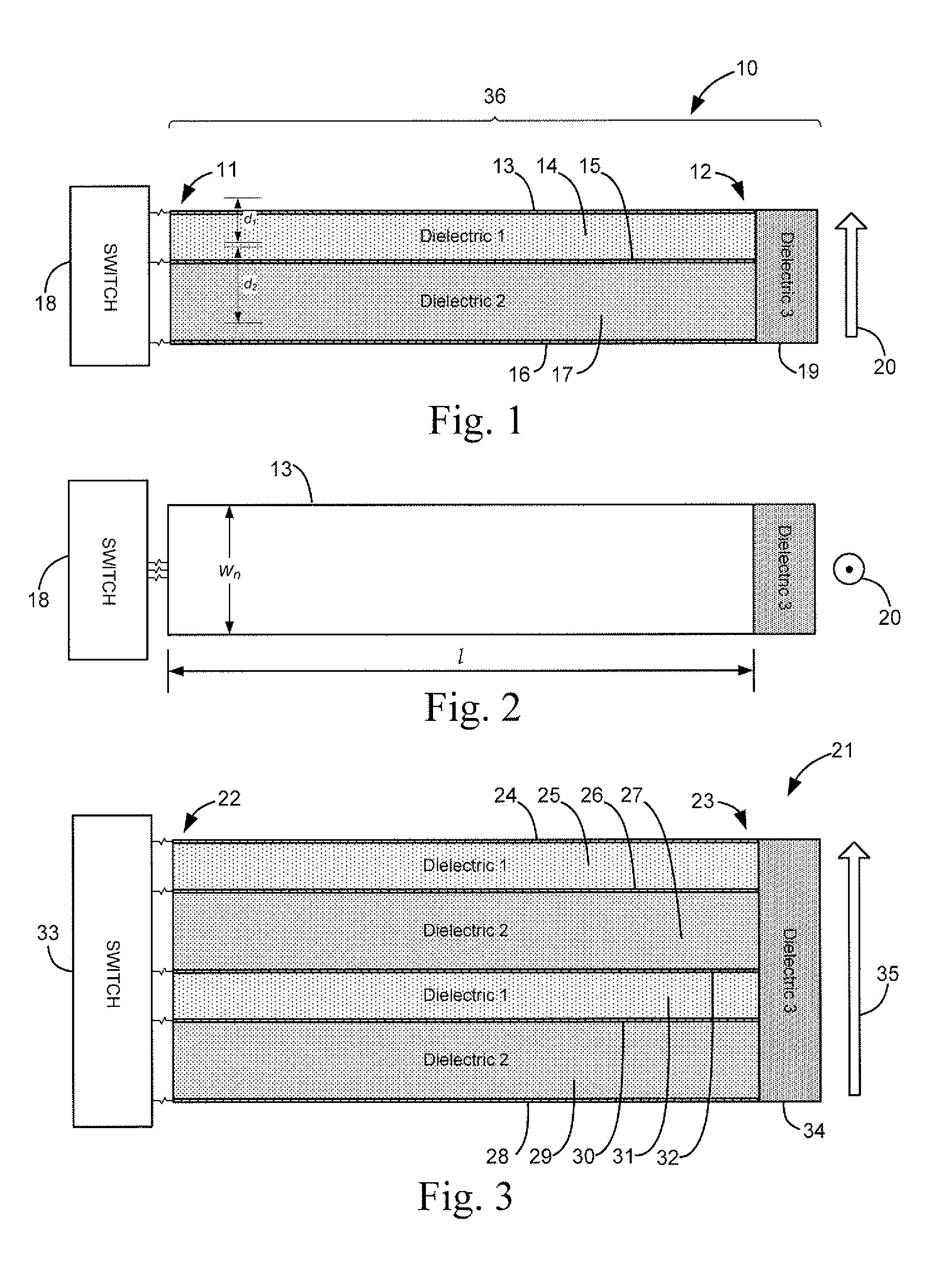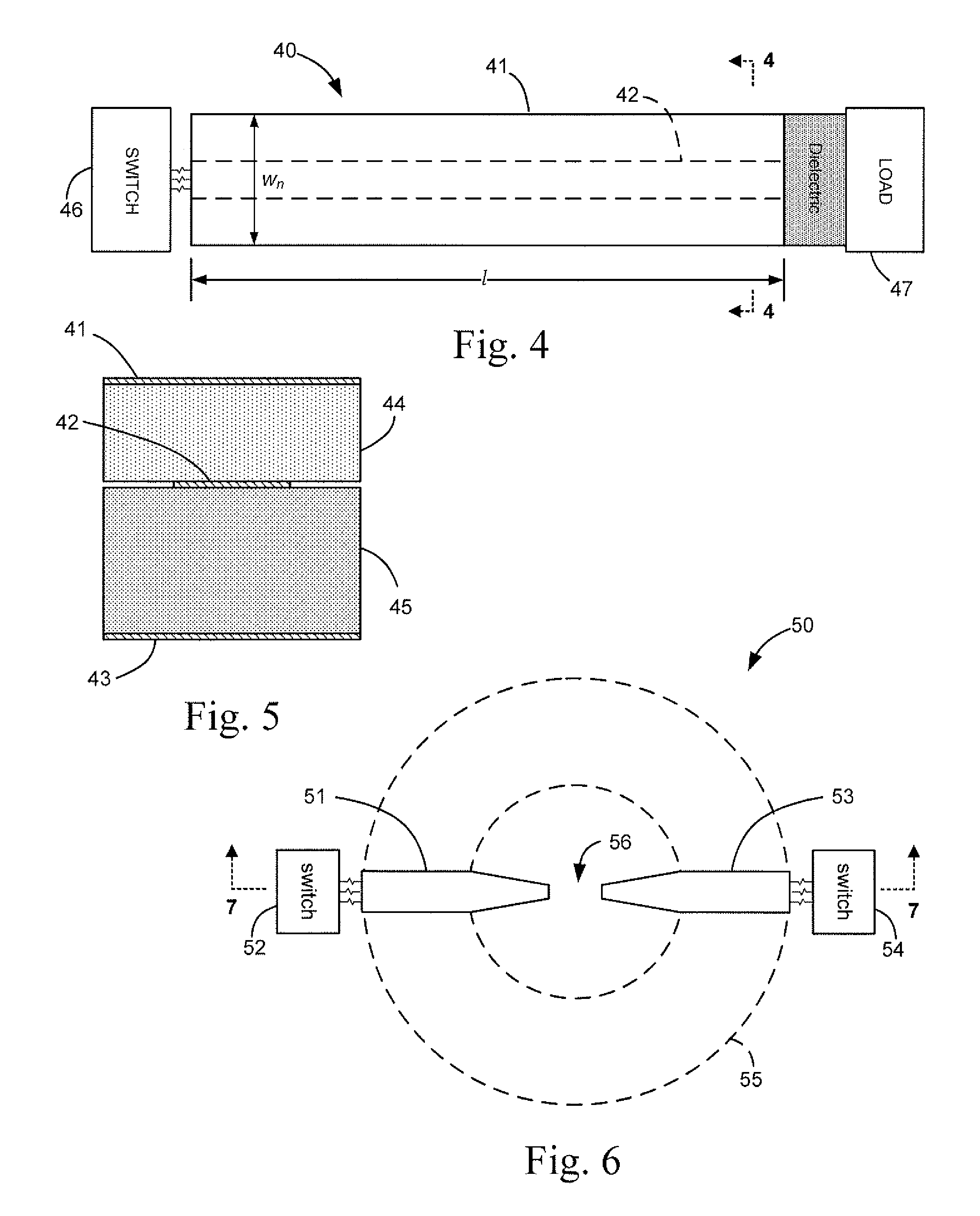Beam Transport System and Method for Linear Accelerators
a technology of linear accelerators and beam transport systems, applied in linear accelerators, accelerators, electrical devices, etc., can solve the problems of limiting the use of beams, affecting beam quality and performance, and overall devices less than optimal for the intended use of accelerating charged particles, so as to achieve greater kinetic energy and kinetic energy
- Summary
- Abstract
- Description
- Claims
- Application Information
AI Technical Summary
Benefits of technology
Problems solved by technology
Method used
Image
Examples
Embodiment Construction
A. Compact Accelerator with Strip-Shaped Blumlein
[0054]Turning now to the drawings, FIGS. 1-12 show a compact linear accelerator used in the present invention, having at least one strip-shaped Blumlein module which guides a propagating wavefront between first and second ends and controls the output pulse at the second end. Each Blumlein module has first second, and third planar conductor strips, with a first dielectric strip between the first and second conductor strips, and a second dielectric strip between the second and third conductor strips. Additionally, the compact linear accelerator includes a high voltage power supply connected to charge the second conductor strip to a high potential, and a switch for switching the high potential in the second conductor strip to at least one of the first and third conductor strips so as to initiate a propagating reverse polarity wavefront(s) in the corresponding dielectric strip(s).
[0055]The compact linear accelerator has at least one strip...
PUM
 Login to View More
Login to View More Abstract
Description
Claims
Application Information
 Login to View More
Login to View More - R&D
- Intellectual Property
- Life Sciences
- Materials
- Tech Scout
- Unparalleled Data Quality
- Higher Quality Content
- 60% Fewer Hallucinations
Browse by: Latest US Patents, China's latest patents, Technical Efficacy Thesaurus, Application Domain, Technology Topic, Popular Technical Reports.
© 2025 PatSnap. All rights reserved.Legal|Privacy policy|Modern Slavery Act Transparency Statement|Sitemap|About US| Contact US: help@patsnap.com



